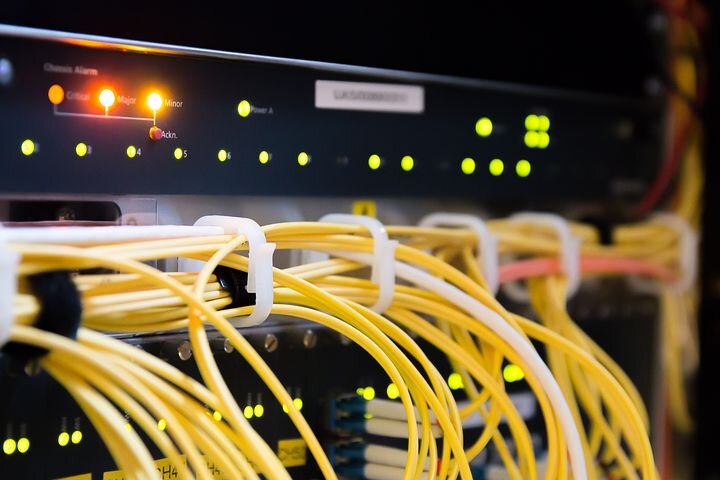EMI Mitigation: How and Why Electric Fields are Measured.
by James Finn ©2022
Engineers often fail to uncover EMI issues because they do not consider the impact of capacitive coupling attributed to E-Fields (electric fields.)
When we assess E-Fields, we measure the electron particle component of electromagnetism in terms of voltage separated from the perpendicular, or vector, magnetic flux "lines-of-force" component of A.C. (alternating current.) The standard frequencies of electrical power are 50 Hertz (European) or 60 Hertz (North American), 5 Hertz (European Railways), and 25 Hertz Traction Power Grid for New Jersey Transit and Amtrak (60 Hz for the New Haven Line), and the Siemen’s Sitras Brand uses AC and DC.
Most think electricity travels within the electrical cabling and is wholly contained within these metal conductors, transmission lines, distribution lines, facility wiring, or equipment and appliance electrical cords. However, an electrical conductor functions merely as a guide. The larger the load on this conductor, the more spread the field. The girth of the electric field around the conductor will depend on how well the overall electrical system is contained and grounded, and the soil resistance of Earth's ground.
There are four possible relationships between the electric and magnetic aspects of electricity. You can have:
A strong electrical component with a weak magnetic flux, or
A electric weak element with a strong magnetic flux, or
Both relatively weak, or
Both are relatively strong.
We identify and measure these aspects separately because the remedial solutions differ.
We mitigate E-Fields by proper Earth grounding versus Magnetic Fields, which need to be either:
1. Canceled by bringing the hot wire (phase conductor) and the neutral return conductor closer together, or
2. Create a literal distance by moving further from the source point, or
3. Create distance from a source point via shielding because the magnetic waves travel around the shielding, weakening. More on all of this later.
Suppose a consultant speaks about EMF as lines of force, and they only show up with a Gauss meter and not any tool to measure the E-fields. In that case, the EMI assessment will be incomplete and thereby incorrect if it does not account for the potential of capacitive coupling. E.P.R. Electron Paramagnetic Resonance and the Stark Effect will disrupt superconductors and more.
Human-made alternating current has only existed in our world since George Westinghouse began mass-producing electricity. In 1893, Westinghouse Corporation applied massive magnetic transformers to step up electricity generated by turbines placed at Niagara Falls. With the first installation of its kind, New York State was officially on the power grid.
Perhaps one of the most insidious forms of non-ionizing radiation resides within our home or office walls. Unshielded electrical cabling (Romex) emits an E-Field about 6-8 feet. Romex is also an excellent antenna for radio frequency emissions (RF). A factory is required to have industrial electrical cable in the walls; however, as I recently witnessed, an outside vendor had installed lighting that was not to code. Unless an electrician has experience working in manufacturing facilities, they may not know the necessary codes.
A slight digression: Once RF couples to active wiring, both line and airborne electromagnetic interference (EMI) result. EMI causes high-frequency harmonic transients or signal-to-noise (S/N) beyond the fundamental 60 Hertz of our electrical supply. We measure electromagnetic interference using oscilloscopes and spectrum analyzers. The more RF wireless devices and conductive surfaces are in the facility, the more EMI will be introduced into our systems.
Depending on the voltage (V/m), the EMI will have a greater potential impact on equipment.
1. Using an NFA 1000, we measure the potential-free voltage in the air. This tool utilizes a proprietary technology developed by Gigahertz Solutions in Germany. It measures airborne voltage using a triaxial X, Y, and Z pattern sensor array without needing a ground reference. This method allows us to measure V/m quite efficiently.
2. A second way is to drive a ground stake into the Earth's ground and take a relative to Earth's ground E-Field measurement.
3. A third method is to measure the actual voltage coupling to the skin. Using a reference ground and grasping a brass bar in the palm, we measure the average potential on the epidermis. The epidermis reacts to the size and strength of the E-Field. This measuring technique is a direct way to evaluate occupational exposure.
At Elexana, we incorporate a third: Using a 3-D sensor array that picks up electrical particles to 9 kHz, the VLF (very low frequency) range is just above the ELF range of our 60 Hertz electricity. With this, we measure the upper harmonic transients of the electrical supply and the electrical aspect of radio frequencies.
Before the NFA 1000, I would go from room to room, measuring my epidermal voltage to determine the size and strength of the E-Fields and the level of remediation success. It was time-consuming but effective.
EMI Diagnostic work requires a passion for thoroughness, relentless attention to detail, and spontaneous on-demand creativity. It's not for everyone, but if you think you have these qualities, you could become a talented EMI Consultant with the proper knowledge and training.
© 2022. All rights are reserved.

